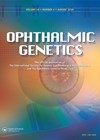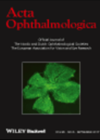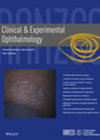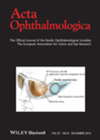
Journal Reviews
Myopia in Han Chinese
The authors present a case-control study of 361 patients with high myopia (mean spherical equivalent of -6.0DS or lower, and axial length greater than or equal to 26mm) and 749 healthy controls (mean spherical equivalent -1.0 to +1.0DS). They tested...
Self refracting – child’s play?
Uncorrected refractive error was the leading cause of vision impairment in the world in 2010. Although refractive error may be safely and effectively corrected with spectacles, lack of well-trained refractionists in settings of limited resources may be a major barrier....
LASEK vs. epi-LASIK for myopia: meta-analysis
Previous studies have produced inconsistent conclusions on the relative benefits between LASEK vs. Epi-LASIK. LASEK uses 20% alcohol to separate an epithelial flap from the Bowman membrane. After ablation, the epithelial flap is repositioned onto the cornea. Epi-LASIK creates the...
Ocular characteristics in Marfan syndrome
Marfan syndrome (MFS) is a genetic disorder with clinical manifestations associated with cardiovascular, ocular and skeletal organ systems. Typical signs are descending aortic root aneurysms, ectopia lentis, tall stature and scoliosis. This observational study looked at the ocular characteristics, visual...








